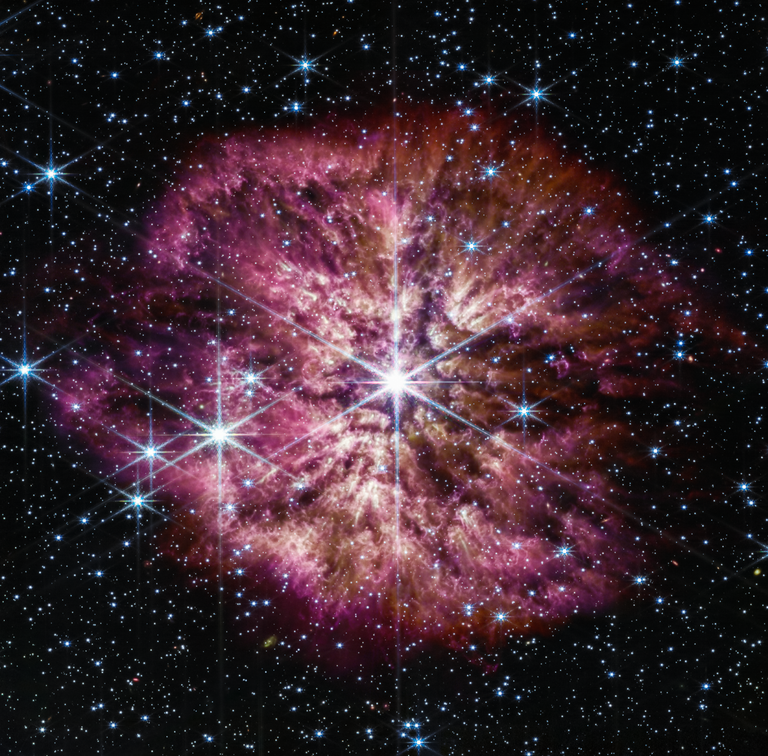The JWST telescope observes an anomalous phase prior to the supernova

In June 2022, the JWST telescope received the image of a Wolf-Rayet star, with great resolution. Observation is very rare as few stars go through this phase before becoming a supernova. It also lasts a short time. What's observed is the WR 124, a 15,000 light-years star in the constellation of Sagittarius.
The Wolf-Rayet phase is spectacular. In fact, at this stage the star loses the outer layers and they form halos of gas and dust. The mass of the WR 124 star is 30 times higher than that of the Sun and, for now, has lost as much mass as 10 Sun. As the ejected gas moves away from the star and cools, it forms a cosmic dust that when shining in infrared light can be detected by JWST.
Astronomers remember that cosmic dust is a component of planets and molecules. It is therefore important to understand its origin and evolution. However, they still have many gaps. The JWST offers great research possibilities for this powder, as it collects the images in great detail.
Buletina
Bidali zure helbide elektronikoa eta jaso asteroko buletina zure sarrera-ontzian










